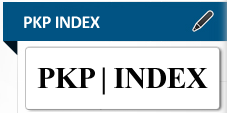ANALISIS KERENTANAN PENCEMARAN AIR TANAH DENGAN PENDEKATAN METODE DRASTIC DI BANDUNG SELATAN
Abstract
Abstrak
Pertumbuhan penduduk menyebabkan peningkatan kebutuhan air bersih sebagai salah satu kebutuhan pokok manusia yang berkelanjutan. Penanganan pemenuhan kebutuhan air bersih dilakukan oleh pemerintah melalui PDAM (Perusahaan Daerah Air Minum) dan dengan regulasi pembatasan pemakaian air tanah. Pencemaran merupakan salah satu penyebab utama penurunan kualitas air tanah, terutama di daerah perkotaan seperti halnya di Kabupaten Bandung bagian Selatan. Penurunan kualitas air tanah ditandai dengan terdeteksinya kehadiran beberapa polutan diantaranya logam berat, nitrit, nitrat, dan bakteri coli. Penelitian ini bertujuan untuk mengetahui sebaran kerentanan dan menentukan tingkat kerentanan pencemaran dengan metode DRASTIC yang mencerminkan kerentanan statis. Parameter yang digunakan dalam pengklasifikasian tingkat kerentanan, antara lain: kedalaman permukaan air tanah, curah hujan, jenis akuifer, tekstur tanah, kemiringan lereng, jenis zona tak jenuh, dan konduktivitas hidrolik akuifer. Berdasarkan hasil analisis parameter DRASTIC, Bandung Selatan memiliki dua tingkat kerentanan, yaitu rendah (52,83%) dan sedang (47,17%). Faktor yang dominan memengaruhi tingkat kerentanan pada masing–masing wilayah berbeda, faktor yang paling dominan adalah kondisi geologi, kemiringan lereng, dan jenis akuifer.
Kata kunci: kerentanan, air tanah, metode DRASTIC, pencemaran
ABSTRACT
Population growth leads to an increase in need for clean water as one of the continuing basic human needs. The handling of the need of clean water is carried out by the government through the Water Local Government Owned Company (PDAM) and by the restriction regulatory on the use of groundwater. Pollution is one of the main causes of groundwater quality deterioration in urban areas as in the southern part of Bandung Regency. The decline in the quality of groundwater is characterized by the presence of several pollutants including heavy metals, nitrite, nitrate, and coli bacteria. This study aims to determine the distribution of vulnerability and to determine the level of vulnerability of contamination using DRASTIC methods that reflect the static susceptibility. The parameters used in the classification of the degree of vulnerability among others: the depth of groundwater level, rainfall, aquifer type, soil texture, slope, type of unsaturated zone, and hydraulic conductivity of the aquifers. Based on the DRASTIC parameter analyses, the southern part of Bandung Regency has two levels of vulnerability: low (52,83 %) and moderate (47,17 %). The dominant factor affecting the level of vulnerability in each different region, the dominant factor are geological condition,
slope, and aquifer types.
Keywords: vulnerability, groundwater, DRASTIC method, contaminant
Full Text:
PDFDOI: http://dx.doi.org/10.34126/jlbg.v7i1.91
Refbacks
- There are currently no refbacks.

This work is licensed under a Creative Commons Attribution-NonCommercial 4.0 International License.









